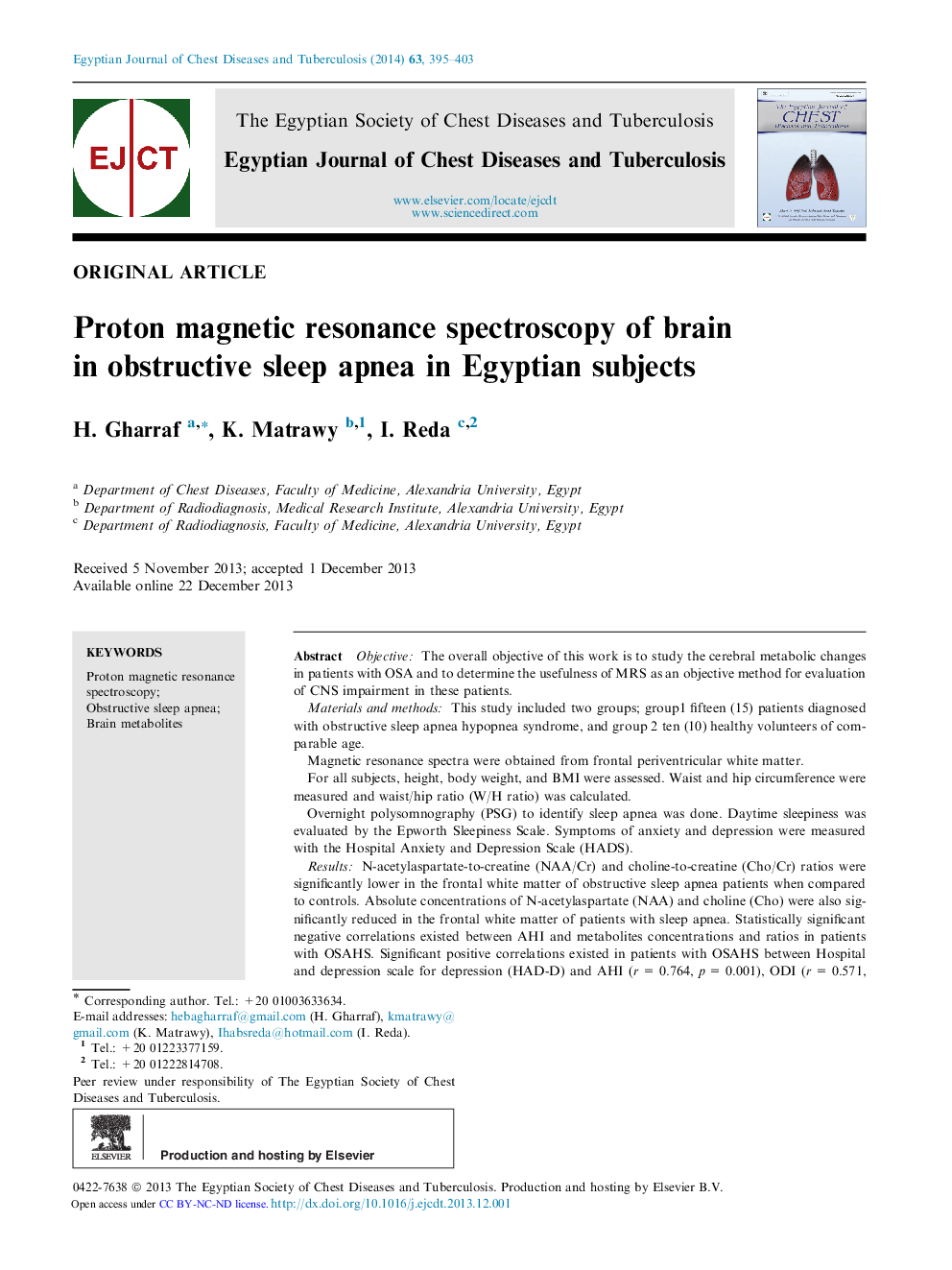| Article ID | Journal | Published Year | Pages | File Type |
|---|---|---|---|---|
| 3400352 | Egyptian Journal of Chest Diseases and Tuberculosis | 2014 | 9 Pages |
ObjectiveThe overall objective of this work is to study the cerebral metabolic changes in patients with OSA and to determine the usefulness of MRS as an objective method for evaluation of CNS impairment in these patients.Materials and methodsThis study included two groups; group1 fifteen (15) patients diagnosed with obstructive sleep apnea hypopnea syndrome, and group 2 ten (10) healthy volunteers of comparable age.Magnetic resonance spectra were obtained from frontal periventricular white matter.For all subjects, height, body weight, and BMI were assessed. Waist and hip circumference were measured and waist/hip ratio (W/H ratio) was calculated.Overnight polysomnography (PSG) to identify sleep apnea was done. Daytime sleepiness was evaluated by the Epworth Sleepiness Scale. Symptoms of anxiety and depression were measured with the Hospital Anxiety and Depression Scale (HADS).ResultsN-acetylaspartate-to-creatine (NAA/Cr) and choline-to-creatine (Cho/Cr) ratios were significantly lower in the frontal white matter of obstructive sleep apnea patients when compared to controls. Absolute concentrations of N-acetylaspartate (NAA) and choline (Cho) were also significantly reduced in the frontal white matter of patients with sleep apnea. Statistically significant negative correlations existed between AHI and metabolites concentrations and ratios in patients with OSAHS. Significant positive correlations existed in patients with OSAHS between Hospital and depression scale for depression (HAD-D) and AHI (r = 0.764, p = 0.001), ODI (r = 0.571, p = 0.026), and ESS (r = 0.644, p = 0.010), respectively. Significant positive correlations existed in patients with OSAHS between Hospital and depression scale for anxiety (HAD-A) and AHI (r = 0.753, p = 0.001), and ESS (r = 0.537, p = 0.039), respectively. Multivariate Linear regression model of factors predictive showed AHI as the main predictor factor for choline to creatine ratio in patients with OSAHS with t = 5.180, at p < 0.001.ConclusionOSA patients show abnormal brain metabolites related to neuronal damage due to intermittent chronic hypoxemia. Anxious and depressive symptoms are highly prevalent in patients with severe untreated OSAS. The severity of depressive and anxious symptoms may be related to excessive daytime sleepiness and to nocturnal hypoxemia both of which are strongly correlated to brain metabolites. AHI seems to be the main predictor factor for choline to creatine ratio in patients with OSAHS.
